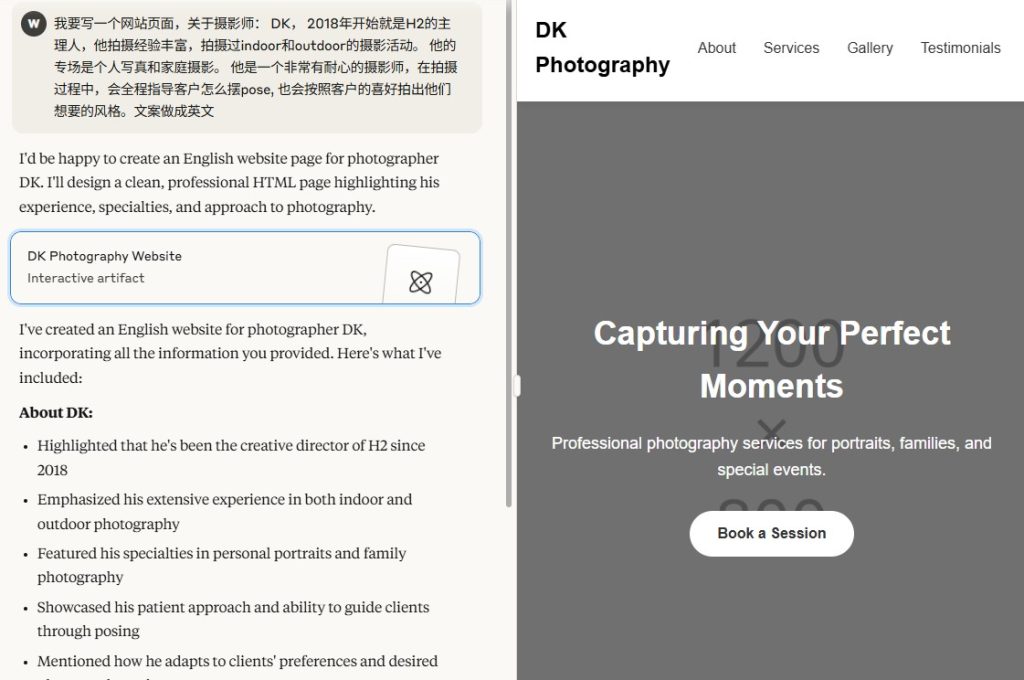A popular corporate social network is LinkedIn. Many businesses have a presence on the site, even if it might not get as much attention for the purposes of promoting themselves as, for instance, Facebook or Instagram. Notably, the site is used by many experts and creative thinkers. In addition, businesses that engage in business-to-business transactions esteem it especially highly.
More than 610 million people are users of LinkedIn. Of them, 303 million are regular users who log in each month, with 40% of these doing so every day. In addition, 90 million senior influencers/thought leaders and 63 million decision-makers utilise LinkedIn, a fact which is significant for many firms. LinkedIn is used as a distribution channel for content by 97% of B2B marketers and generates 80% of social media-generated B2B leads.
LinkedIn is the social media platform of choice for senior-level managers, thought leaders, and executives. Even serious decision-makers who don’t care about Facebook status updates, Twitter tweets, YouTube videos, or Instagram photos sometimes find thought-provoking pieces posted on LinkedIn to be of great interest.
As a result, the majority of businesses have to be active on LinkedIn and must incorporate it into their total web marketing plan. However, companies that provide B2B services should definitely make sure that LinkedIn is one component of their marketing plan.
Guidelines for Creating a Successful LinkedIn Marketing Campaign
There are many ways to improve your social media engagement. But when it comes to LinkedIn you need to be a little extra careful about what you are posting. It’s a perfect platform to make and improve your company’s image. So here are our 8 effective ways to ensure your LinkedIn marketing campaigns are a success:
1. Set Specific LinkedIn Marketing Objectives
LinkedIn marketing is the same as other social media marketing. Every campaign has to start with well-defined goals. You need to consider your exact motivation for beginning this LinkedIn marketing campaign. What do you want it to do for you?
Your objectives should be SMART, which stands for Specific, Measurable, Achievable, Realistic, and Timely. Make sure you can utilise some appropriate measures to in particular gauge your campaign’s success.
Here are some typical goals that aren’t SMART but are nonetheless communicated generally:
- Increasing the exposure of your brand (probably best measured using data on your LinkedIn Page analytics)
- Generating leads (because LinkedIn is the network where you are most likely to find possible clients or consumers for your business)
- Interacting with your target market (again, you will find data on this in your LinkedIn Page analytics and less tangibly in your participation in LinkedIn Groups)
- Promoting your goods (perhaps less common on LinkedIn, but still possible indirectly)
2. Understand Your Target Audience
Understanding your target audience’s likes and interests in-depth is one of the key elements to social marketing success. Spending money and time marketing to people who will never be interested in your product are of little use. If you are, for instance, offering a product aimed at teens who are still in school, you wouldn’t want to conduct much, if any, marketing on LinkedIn.
If your target consumers use LinkedIn, you could provide more specific information about their demographics.
Before knowing about the firm they work for, you would need to be aware of the critical traits of the individuals who are likely to purchase your goods. For example, if you are offering B2B items, a particular manager within each firm will decide whether or not to buy your goods – it won’t be the organisation as a whole.
Therefore, it is essential to consider which member of the management would be the one to decide or even who is likely to suggest purchases inside a company.
You may check your statistics to get a good indication of the individuals interested in your page if you already have a useful LinkedIn corporate page. Do people who share and like your content exhibit any patterns?
3. Make Your Company Page Perfect
Like many social networks, LinkedIn offers both personal sites, where users may display their previous employment and achievements, and business pages. LinkedIn will set up a company profile for you if anyone in management or an employee adds your firm as a place of employment. On the other hand, your company page will appear neglected and unclaimed if you don’t provide materials and fill in the blanks.
For any business on LinkedIn, a well-designed, useful corporate page is a need. Your target audience will be those who are most inclined to go there when they are on LinkedIn. Regardless of whether you sell products or merely use LinkedIn to increase brand recognition, you should think of it as a virtual store.
Your firm’s LinkedIn corporate profile is the ideal spot to share all of your company’s success stories. In addition, you may use it to showcase your group and any accolades you’ve received. Since LinkedIn is ultimately a network of people, you should highlight the faces of your firm on your LinkedIn corporate profile.
Anyone interested in learning more about your organisation on LinkedIn will go specifically for your company page. It is one of the most popular ways for people to learn about your business, including what you do, what you produce, where you have offices, and who the top management and leadership are.
Your LinkedIn company profile should accurately represent all of your other branding efforts. It must provide connections to the URL of your website, as well as your official logo, colours, and fonts.
Consider the kinds of inquiries your potential clients would make, and anticipate them by answering them on your company website. You must carefully evaluate the language on your LinkedIn profile, as with all of your online assets, and incorporate pertinent keywords into your writing.
But be careful to update your company page frequently. You must frequently post pertinent, educational, and engaging information on LinkedIn if you want to be taken seriously.
4. Promote the Page for Your Business
If you want people to find your website, you need to promote it. While the careful use of keywords may help your company page appear in LinkedIn searches, you would still need to give it a push. Otherwise, you could just be getting one or two new visitors a month.
Every time a chance arises, you should use it to promote your page. This may be as easy as linking to your LinkedIn profile on your website and other social media platforms to invite people to follow you there. Your chances of success on LinkedIn would increase with the visibility of your profile.
Once someone follows your page, they will receive notifications of your posts and updates in their feed, which will help them remember you.
Asking all of your staff members and supervisors to follow your corporate page should be the first step in this process; this should give you enough initial followers to appear reputable. Next, you may include a link to your LinkedIn profile in newsletters and places like your email signature. Finally, remember to ask your current clients to check out and follow your updated LinkedIn company profile.
5. Produce and Distribute Valuable, Engaging Content
You must be sociable on LinkedIn, just like on other social media. You cannot regard it as a form of set-and-forget advertising. If individuals aren’t getting something in exchange for following your account, it is of little use to them. They would eventually stop paying attention to you, adding your account to the long list of others they were following but have ignored.
It’s crucial to keep in mind that LinkedIn is a social network that is more “grown-up” and serious than many of the others; sharing cat memes there definitely isn’t the best use of your time. However, it is the ideal platform for writing and disseminating blog content that would appeal to your target audience. LinkedIn is especially well suited for thought leadership-style posts, which let you show off your subject matter proficiency.
Even while you may share links to blog pieces you’ve already uploaded, research reveals that LinkedIn’s algorithm rewards the posting of quality content on the platform rather than pushing links outside.
You can write blog entries on LinkedIn without leaving the site. Although it is not currently accessible on their mobile app, the LinkedIn Publishing Platform enables members to create, edit, and publish articles on the social network.
Not every LinkedIn post on your page needs to be original. You can post other articles that you find and believe will be helpful to your target audience. Remember that your LinkedIn account’s main objective is to benefit your target market. Gathering relevant material from other sources may help you reach this goal just as effectively as creating original content.
6. Incorporate Images and Other Media Into Your Work
Despite not being as dependent on visual content as YouTube or Instagram, such content is nonetheless significant on LinkedIn. An engaging image will always be more effective than a sea of words. So instead of posting a photo or phrase alone, you would often include it in a text-based article.
Although the text in your shared post is its main component, you should incorporate graphic elements to enhance it. The majority of the time, an individual will be drawn in to read your post by a picture or video. However, they may follow your page if they enjoy your posts in general.
Instead of just sharing YouTube videos, LinkedIn now invites you to post videos directly to its platforms. You may include multimedia at any place in your article if you’re writing for the LinkedIn Publishing Platform. This includes photographs, videos, podcasts, slides, tweets, and more.
7. Participate In Linkedin Groups
Participating in conversations in LinkedIn Groups is another method to come across as sociable on the platform. The opportunity to network with other business people is good here. The ability to concentrate on connecting with your target audience should be possible if you are judicious about the groups you join. From the search box on LinkedIn, you may look for appropriate groups.
You could even decide to start and run a group where you specifically target the people you want to reach. But, naturally, it will take time to maintain the dialogue and make it interesting for the participants.
8. Advertise on Linkedin As Part of Your Campaign
Like most social networks, LinkedIn allows you to increase brand performance via the use of advertising. With LinkedIn’s broad targeting options, you can make sure that your advertisements are only seen by the people you want them to be seen by.
Ads available for purchase include:
- In sponsored content, you may pay to have your shared material seen more widely. This implies that a far wider audience sees your content than you might get naturally.
- Text advertisements – PPC ads are displayed across a variety of LinkedIn pages, including the LinkedIn home page, profile pages, results pages from searches, and group sites.
- With Sponsored InMail, you can send users of LinkedIn tailored messages. This is a form of email marketing done inside LinkedIn.
In a Nutshell
For any social media platform to attract the right audience, you need to be active and publish engaging, relevant content. You have to make your presence felt by being consistent but at the same time, keep in mind your campaign’s goals.
LinkedIn being a more professional platform, you need to ensure you post appropriate content unlike other social media platforms. If you are still not sure how to go about it, you can engage a social media management company to manage everything for you. Get noticed in no time.








